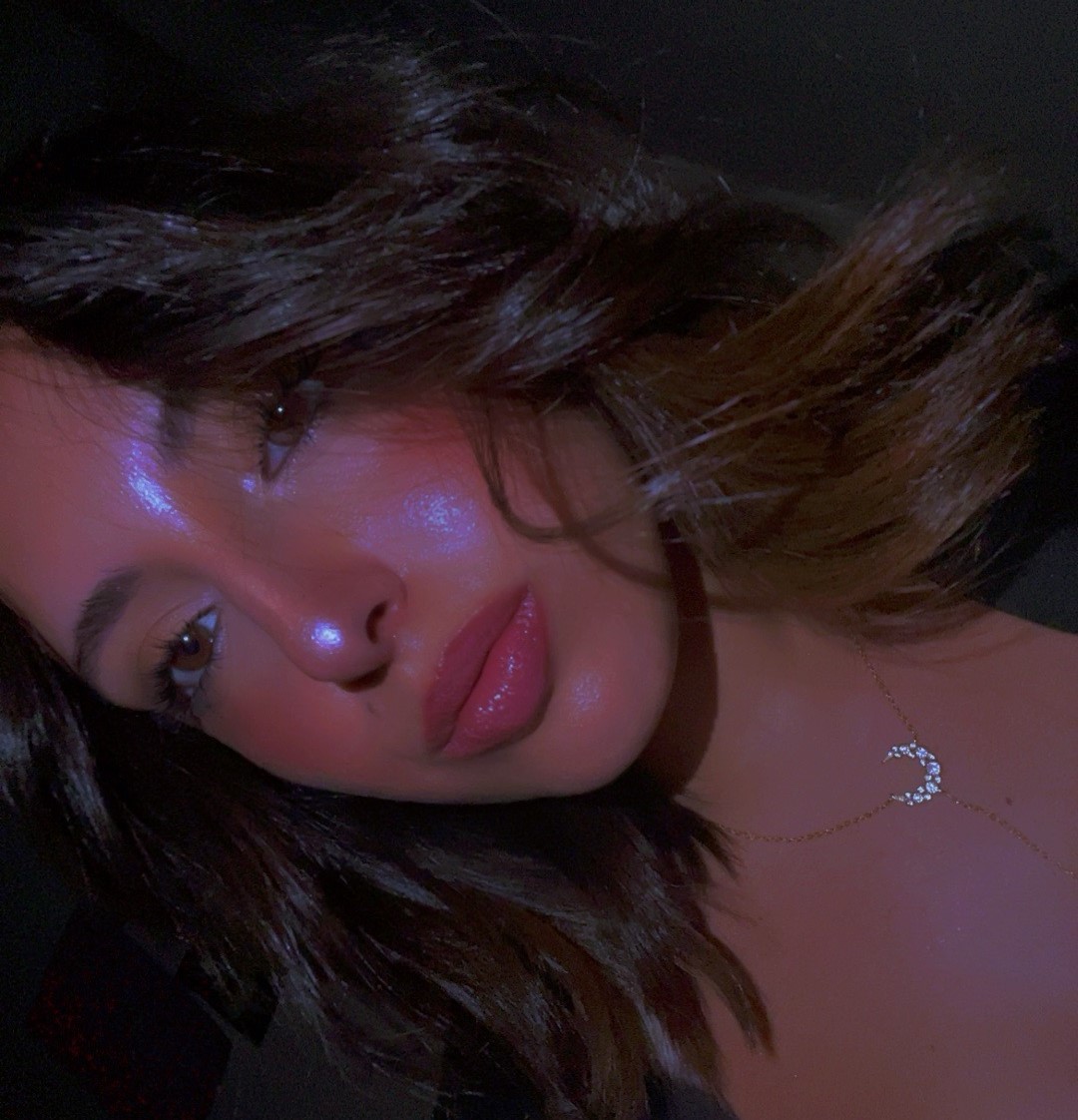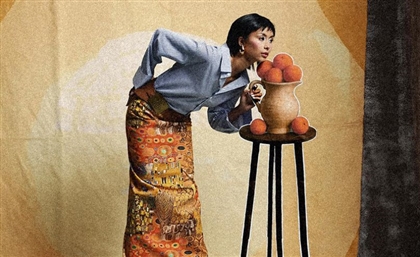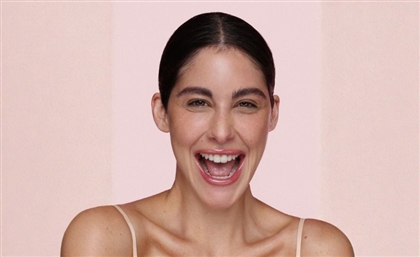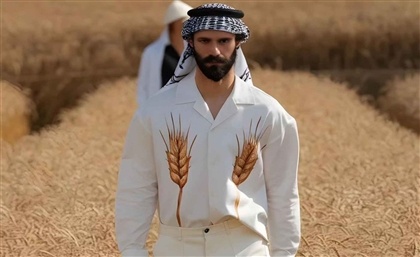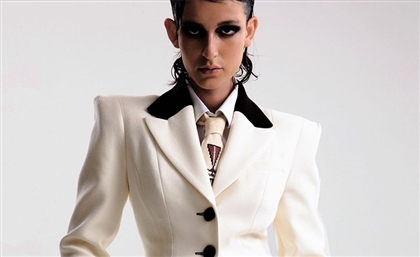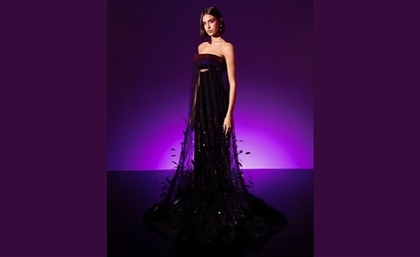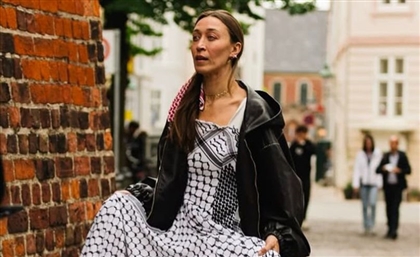Cairo-Based Label Queens of Ra Celebrates Divine Femininity
The Egyptian-Sudanese founder and designer never compromises on quality or craftsmanship - because your divine feminine deserves nothing less.
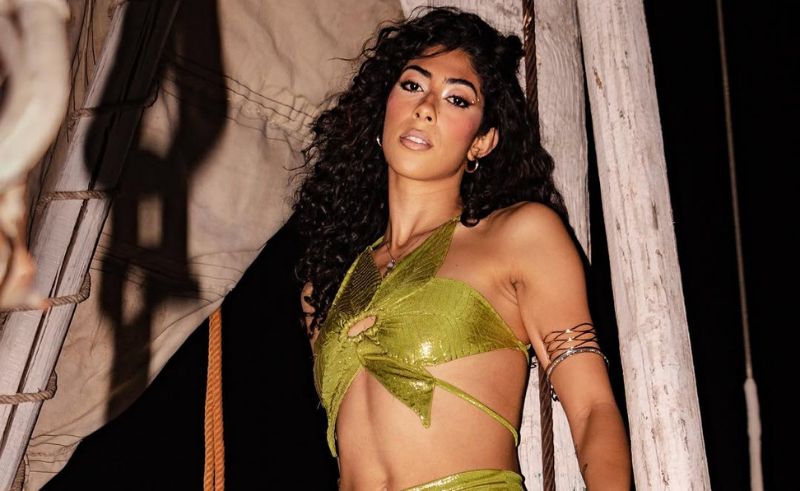
Under The Spotlight: The goddess-like, ancient Egyptian-inspired creations of bespoke womenswear label Queens of Ra.
The Setting: Cairo, Egypt.
The Frame: Vibrant ornaments, intricate draping, tambour beading, sensual cuts and embroidered embellishments; all within the fantasy world of goddess warriors by the creative mind of Nadine Radia, where the ideals of a matriarchal society live and thrive.
The Designs in One Sentence: “Pieces that you’d imagine a fearless, courageous, yet graceful queen would wear in a modern day society,” founder Nadine Radia says.
-9aabb6ac-d5f6-4b75-88de-6d5e59f5eda2.jpg)
About The Founder: Nadine Radia is an American-Sudanese-Egyptian designer, creative director, seamstress, CEO and brand founder. She is everything Queens of Ra is, and is behind every minuscule detail and grand step of the brand, founded in 2020. Radia is self-taught from A to Z, which is no easy feat considering the intricate beading and hand-sculpting techniques she employs.
“It was an extremely random moment of trying to simply entertain myself during COVID and pick up a new medium,” Radia shares. “What started as a little self expression hobby to occupy my time with, would quickly turn into my biggest passion in life.”
Behind The Brand Name: ‘Queens of Ra’ comes from the ancient Egyptian ankh, a symbol of life itself, wisdom, and the power to judge with justice and fairness. “This is exactly what I'm trying to empower women to feel when they wear my designs, the gratitude of life we get to experience, and to lead through life with graceness and fairness,” she reveals. “That is what it means to be a queen to me.”
How it All Began: “I will take us back to the Nile cruise I took when I just graduated high school,” Radia starts. “I went from living in America, trying to assimilate to a culture that clearly was not mine, to exploring the history and culture of ancient Egypt.” This led to the founder immersing herself in all that is and was ancient Egyptian civilization, from how they created highly-detailed worship sites to the love they had for fine craftsmanship.
-89dbb9b7-0212-49f2-992f-c56883a930eb.jpg)
“It is the beautiful juxtaposition I needed to see when fast fashion brands like Shein were beginning to explode,” she explains. “I have no desire to make tops you see on fast fashion websites. I feel my calling is to create high caliber, one-of-a-kind, highly constructed pieces that will be remembered in history.”
The Creation of Hand-Sculpted Bras & Belly-Dancer-Inspired Shakhalil: “I sculpt my own thermoplastics to create some of my sculpted bras,” she unveils. “I bought a 3-D printer, and learned how to digital design and print.” It doesn’t end there; the entirely self-taught Radia also purchased an entire welding and brazing kit (oxygen and acetylene tanks), and learned how to melt and connect bronze to incorporate them in her designs. “I also taught myself how to bead and attach chains, so they could withstand any amount of pressure.”
The Design In Depth: “Essentially, I buy sheets of thermoplastic that are used with a heat gun, and when you heat up these sheets of paper, they melt. Then, you can shape them into anything. Once the thermoplastic cools off again it hardens, which makes it the perfect material to make a corset or bra or anything you want to sculpt, and still be durable.”
Radia's Mission to Empower Women Through Every Creation: “I’d like to think my creations can help women empower themselves by connecting with their inner divinity, femininity, and strength,” Radia explains with passion dripping from her voice. “I hope they recognise the beauty they possess and embrace the qualities that define them.”-b1a2fe6f-00e6-40d7-aa22-02ef68218b03.jpg)
To the designer, it’s fascinating to observe how body standards have evolved over the years. Today, society equates beauty with a slim waist and curvy hips, contrasting sharply with historical perspectives that celebrated fuller figures as symbols of health and beauty. “My aim is to design clothing for women of all shapes and sizes, allowing each piece to celebrate their bodies and well-being. Our bodies carry us through life. If we spent more time honouring what they do for us instead of judging their appearance, I believe we’d all find greater happiness.”
The Designs Through Radia’s Lens: “Since launching my brand in America, I've had the privilege of sourcing all my materials online,” Radia shares. “Each morning, I would spend hours scouring the virtual marketplace for crystals, fabrics, beads and embellishments that resonated with me.”
Radia recalls her friends and family warning her of purchasing such expensive materials, advising her to replace semi-precious beads with plastic or glass beads. But she always refused. “I knew that my ancestors never compromised on the quality of their materials or craftsmanship. You can feel the power difference in a piece made with semi-precious stones versus one made with glass or plastic.“
-8b8a25c4-9288-43c0-9acd-1b6633d3eb27.jpg)
Some of Radia’s creations incorporate over 1,000 semi-precious beads, with material costs alone exceeding $1,000. “I spent months beading them, sometimes feeling tempted to give up and settle for something simpler, like a necklace. Yet, something deep within urged me to persist. I knew that all the effort and energy invested would ultimately pay off, and I don't mean financially.”
The Muse: Radia frequently highlights the influence of ancient Egyptian civilization on her clothing, but, we at Scene Styled, wondered what about ancient Egypt particularly struck a chord with the founder?
-05df3318-703d-42b0-8357-2dc4c6471fe3.jpg)
“It’s the art, architecture, attire and jewellery crafted for the pharaohs that truly inspire me,” she reveals. She gives a nod to a singular standout piece - a dress thought to be over 5,000 years old, made entirely of beads and authentic semi-precious and precious stones. “To say their craftsmanship was ahead of its time is an understatement,” she raves with enthusiasm. “Their commitment to quality materials and meticulous construction serves as my guiding principle in design.”
“My mother and grandma have been a huge inspiration for my designs since day one,” she adds. “On a surface level, it’s the jewellery they wear that is inspired by our ancestors or passed down from generation to generation. On a more intimate level, it’s the way they carry themselves, the way they move through life gracefully and true to their authentic selves.”
On a more ancestral scale, it’s the women of ancient Egypt that ruled their civilisation with knowledge and fearlessness that inspire Radia, as well. “It’s the queens like Queen Nefertiti and Queen Hatshepsut that paved the way for women in power, who were incredible pillars of inspiration in the matriarch society.”
Scene Styled Picks: Amidst the realm of Queens of Ra’s creations, the Fairy Set emerges as a stand-out piece, with its weighted balance of sculpted constructions and delicate fabric. Its gossamer skirt, adorned with tiers of ruffles and made of iridescent fabric, dances with every movement. The hand-sculpted fairy wing bra, embellished with golden veins, is a final touch of ethereal beauty to the set.
-1651a2ff-4fbc-412f-bcf5-1f883bf58bd7.jpg)
The Designer Picks: “Oh, Malika. She is one of my favourite pieces, considering she is my first-time hand sculpting anything in my life.”
“She gave me the start to sculpt what I desired with my hands. With that, I quickly dove into a fantasy world, sculpting fantasy tops, mini swords and knives, crowns, and anything that embodied what a goddess warrior would wear.”
In the Words of Nadine Radia… “I believe that looking back, slowing down, and creating things that take time and are meticulous is far more rewarding to me than the fast fashion brands that whip out thousands of creations a day. I feel like I owe it to myself and to society to create work that was normalised thousands of years ago, but cannot be found today. It’s an ode to my ancestors…”
Trending This Month
-
Oct 11, 2025

